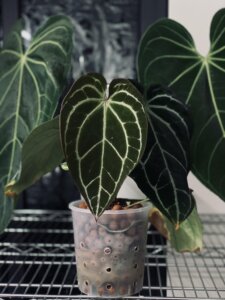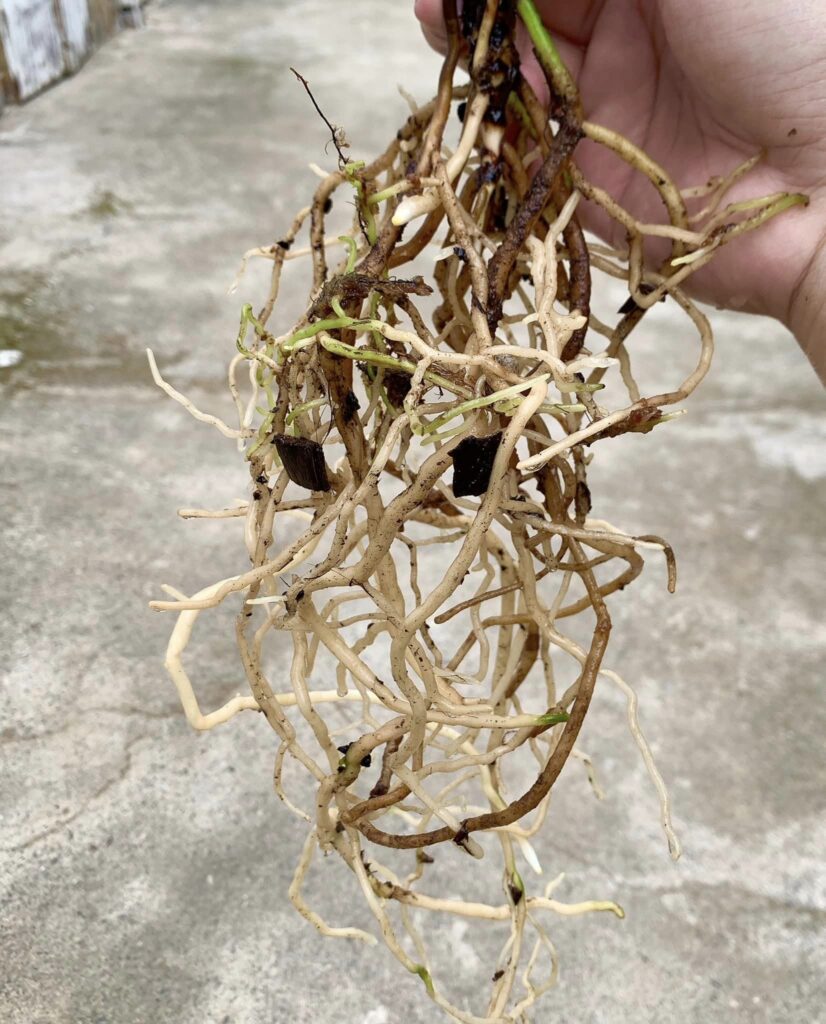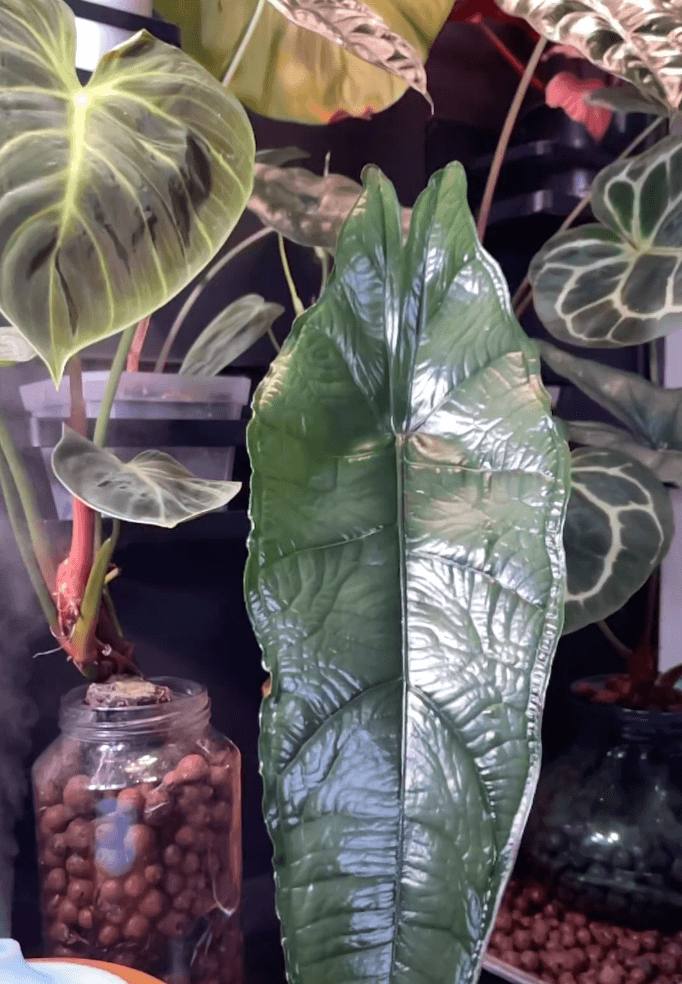
In the world of houseplant cultivation, semi-hydroponics has emerged as a game-changing approach. Often referred to as semi-hydro or hydroculture, this method marks a significant shift from traditional plant-growing techniques.
Instead of using organic mediums like soil, bark, or peat moss, semi-hydroponics relies on an inorganic medium.
A popular choice for this method is LECA, or Lightweight Expanded Clay Aggregate, a unique material comprising clay balls that expand when soaked in water. These aggregates are notable for their strength, lightness, high absorbency, and porosity.
Pon is also another well-known semi-hydroponic medium among the community.
How Semi-Hydroponics Works
Semi-hydroponics is grounded in the principles of hydroponics but with a twist. The method utilizes a passive hydroponic system where plants are grown in an inert, soilless medium.
This medium effectively supports the plants while allowing air and water to circulate more freely around the roots compared to traditional soil.
In semi-hydroponics, the roots are partially submerged in a nutrient-rich water solution, allowing them to absorb moisture and nutrients as needed.
The system often includes a water reservoir, ensuring a consistent supply of water and nutrients to the plant roots.
Advantages of Semi-Hydroponics
Healthier Root System

One of the key benefits of semi-hydroponics is its ability to foster a healthier root system. The method prevents common issues such as root rot, often caused by waterlogged soil in traditional planting methods.
The increased aeration and the controlled water supply ensure that the roots receive the optimal amount of moisture, reducing the risk of overwatering and under-watering.
Efficient Water Usage
Semi-hydroponics is celebrated for its water efficiency.
The medium’s porous nature allows it to wick moisture to the roots as needed, conserving water and reducing the frequency of watering.
This is particularly advantageous in areas where water conservation is a priority or for individuals seeking to reduce their environmental footprint.
Reduced Pest Activity
Growing plants in a semi-hydroponic system can lead to a significant reduction in pest activity.
Soil-borne pests are less of a concern in this soilless environment, which can be a major relief for new plant owners who might not be familiar with dealing with such issues.
Environmental Benefits
The use of sustainable mediums like LECA in semi-hydroponics contributes to the method’s environmental friendliness.
These materials are often produced through eco-friendly processes, aligning with the growing demand for sustainable gardening practices.
User-Friendly for Beginners
For new plant owners, the simplicity and ease of semi-hydroponics are highly appealing.
The self-watering aspect, along with the reduced need for constant maintenance, makes this method particularly suitable for beginners.
It allows you to enjoy plant care without the stress and complexities often associated with traditional soil-based gardening.
Why Semi-Hydroponics is Ideal for New Houseplant Users
For those new to the world of houseplants, semi-hydroponics offers a user-friendly and forgiving introduction. Its simplified care requirements, combined with the reduced risk of common plant-care issues, make it a perfect starting point.
- Ease of Maintenance: Semi-hydroponics simplifies the plant care routine. The self-watering system minimizes the need for frequent watering, a common stumbling block for new plant owners. This ease of maintenance is a huge draw for those who might not have the time or confidence for more demanding gardening tasks.
- Learning Experience: While there is a learning curve, particularly in understanding the unique needs of plants in a semi-hydroponic system, the process is generally more straightforward than dealing with soil-based systems. New plant owners can learn about plant care in a more controlled and less intimidating environment.
- Aesthetic Appeal: Beyond its practical benefits, semi-hydroponics offers a clean, modern look that is increasingly popular in contemporary home décor. The absence of soil leads to a tidier gardening setup, ideal for indoor spaces where cleanliness is a priority.
Setting Up a Semi-Hydroponic System
Setting up a semi-hydroponic system is a straightforward process, even for beginners. Here are the basic steps to get started:
- Choose the Right Medium: Select a suitable inorganic medium like LECA or Pon. Ensure that the medium is clean and free of contaminants.
- Select Appropriate Plants: While many plants can thrive in a semi-hydroponic system, some are better suited than others, like Alocasia or Anthurium. Research which plants are most likely to succeed in this environment.
- Prepare the Water Reservoir: The water reservoir is a critical component of the semi-hydroponic system. It should be large enough to hold an adequate water supply but not so large that it overwhelms the plant roots.
- Nutrient Solution: In semi-hydroponics, nutrients are delivered through a water solution. Choose a nutrient mix that is appropriate for the type of plants you are growing.
- Monitoring and Maintenance: Regularly check the water level and the health of your plants. Adjust the nutrient solution and water levels as needed to ensure optimal growth.
Transitioning to Semi-Hydroponics
Transitioning plants from soil to a semi-hydroponic system is a process that requires care and attention. Here’s how you can do it:
- Gently Remove Soil: Carefully remove as much soil as possible from the plant’s roots. This can be done by gently shaking the roots or rinsing them under water.
- Prepare the Medium: Soak the LECA, Pon, or chosen medium in water for a few hours before use. This ensures that the medium is fully expanded and ready to support the plant.
- Planting: Place the plant in the semi-hydroponic container, ensuring that the roots are in contact with the water reservoir. Fill the container with the soaked medium, securing the plant in place.
- Adjustment Period: Allow the plant to adjust to its new environment. Monitor it closely for signs of stress and adjust watering and nutrients as needed.
Read more: Best tips for successful transitions in semi-hydro

Common Misconceptions About Semi-Hydroponics
Despite its growing popularity, semi-hydroponics is often misunderstood.
Here are some common misconceptions and the truths behind them:
- Too Technical for Beginners: While it might seem technical at first, semi-hydroponics is quite user-friendly. Once the basic setup is understood, it becomes an easy and manageable method for growing plants.
- Limited Plant Options: Contrary to popular belief, a wide variety of plants can thrive in a semi-hydroponic environment. From leafy greens to flowering plants, many species adapt well to this soilless medium.
- High Initial Cost: While the initial setup might require some investment, especially in purchasing the medium and reservoir, the long-term savings in water and reduced pest management often offset these costs.
Conclusion
Semi-hydroponics is a revolutionary approach to houseplant care that combines efficiency, sustainability, and ease of use. It’s particularly suitable for new plant owners, offering a forgiving and rewarding introduction to the world of plant care.
Whether you’re an urban dweller with limited space, a busy individual seeking a low-maintenance gardening solution, or a sustainability-conscious person, semi-hydroponics is an excellent choice. Embrace this innovative method and watch your houseplants thrive like never before.


